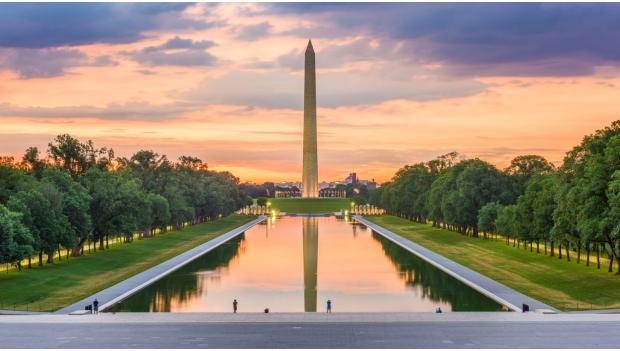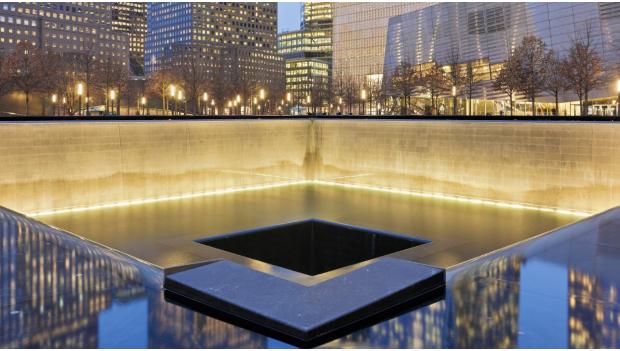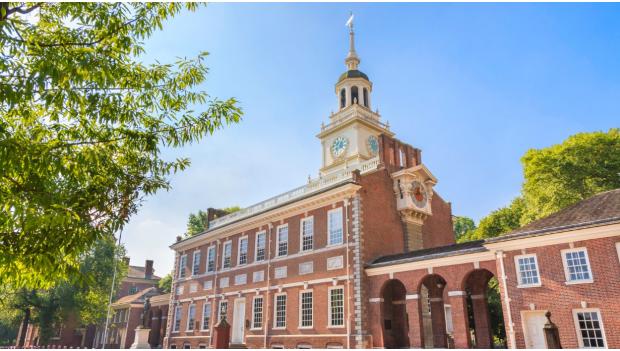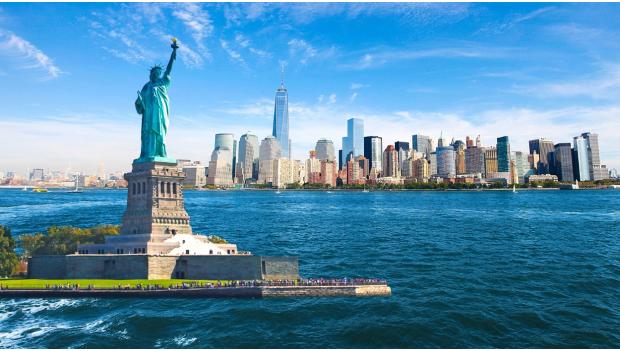Top 9 American History Parks and Monuments to Visit
There are many historical landmarks all over the United States that pay honor to our nation’s history. From Gettysburg National Military Park where the battle was fought that marked the turning point of the Civil War, to the September 11 Memorial that remembers those who were lost in the largest foreign attack on domestic soil, there are many monuments and landmarks that mark the turning points in our nation’s history. This year, plan a trip outdoors with family and friends to some of these top historical landmarks and get a dose of culture and history with your national park visit.
Celebrate American history at these nine historical monuments and landmarks.
1. Mount Rushmore, South Dakota
Mount Rushmore is a historical landmark that one must see to believe. At Mount Rushmore, the granite faces of four of America’s early and influential presidents (Washington, Jefferson, Roosevelt and Lincoln) are carved into the side of the mountain, creating an imposing and impressive monument to early America. Created by sculptor Gutzon Borglum, construction of the grand project began in 1927 and ended in 1941. Today, over 2 million visitors come to see the impressive mountain art and to explore the surrounding Black Hills of South Dakota, a draw in their own right. Most visitors to Mount Rushmore walk the 0.6-mile Presidential Trail to get an up close and personal view of the sculpture. The Lincoln Borglum Visitor Center is another fun stop, featuring a 14-minute film describing the creation and carving of Mount Rushmore. Learn more.

2. The National Mall and Monuments, Washington DC
The National Mall is an icon of the nation’s capital. From the Lincoln Memorial to the Vietnam Wall, the National Mall is home to memorials that honor and commemorate the people who have shaped and protected our country. The mall is home to the Roosevelt Memorial, Korean War Veterans Memorial, Lincoln Memorial, Martin Luther King Jr. Memorial, Thomas Jefferson Memorial, Vietnam Veterans Memorial, the Washington Monument and the World War II Memorial. The mall is also home to over 1,000 acres of green space and it is possible to stroll the mall and visit all of these memorials on foot. Online maps make navigating the National Mall a breeze. Visitors will be awestruck as they stand in the exact spot where Martin Luther King Jr. gave his “I have a dream” speech, or stare at the White House, imagining all of the monumental decisions made behind those walls. Learn more.
Where to Camp: Aqua Pines Camp

3. National September 11 Memorial and Museum, New York City
The National September 11 Memorial is a tribute of remembrance and honor to the 2,977 people killed in the terror attacks of September 11, 2001 at the World Trade Center site, at the Pentagon, and in the airplane crash near Shanksville, PA. The memorial features twin reflecting pools that sit within the footprints of where the twin towers once stood. The names of every person who died during the terror attack are inscribed into bronze panels along the edges of the pools. The Memorial Museum tells the story of 9/11 through interactive technology, archives, narratives and a collection of artifacts. Both the memorial and the museum commemorate the day when our country experienced our most deadly foreign attack on domestic soil. Take note that the memorial is free to visit but the museum requires a ticket that should be purchased in advance. Learn more.

Recommended: 9 Reasons to Visit New York in 2019
4. World War II Valor in the Pacific National Monument, Hawaii
The World War II Valor in the Pacific National Monument oversees operations of the Pearl Harbor Visitors Center, and maintains and operates the USS Arizona Memorial as well as other memorials on nearby Ford Island. The memorials mark a pivotal moment in American history when the U.S. was attacked at Pearl Harbor and subsequently entered World War II. The monument preserves the stories from the Pacific War, including the internment of Japanese Americans. The USS Arizona is a battleship that was bombed during the attack on Pearl Harbor, killing 1,177 sailors and marines. Today, Arizona remains where she fell and a memorial was built on top of her. The memorial honors the memory of those who lost their lives that day. The Pearl Harbor Visitor Center is also a part of the monument and is one of the top three most heavily visited tourist destinations in all of Hawaii. There is no fee for the visitor center or the museums but a free ticket is required to enter the USS Arizona Memorial. Those can be obtained online or at the visitor center. Learn more.
Where to Camp: Pacific Ohana Hostel

5. Gettysburg National Military Park, Pennsylvania
The Battle of Gettysburg was a turning point in the Civil War. The Union victory ended General Robert E. Lee’s second and most ambitious invasion of the North and ended the hopes of independence for the Confederate States of America. Gettysburg was also the Civil War’s bloodiest battle and brought devastation to the town of Gettysburg. Today, most visitors start their tour of the Gettysburg battlefield at the Visitor Center where park rangers can help explain the different battleground tour options. Rangers and historians offer free hour-long talks about the Battle of Gettysburg as well as a tour of the Soldier’s National Cemetery. For those who would like to explore the park on their own, there are also a number of pedestrian and equestrian trails, as well as a campground. Learn more.
Where to Camp: Gettysburg Campground

6. National WWI Museum and Memorial and the Liberty Memorial, Missouri
After World War I, Kansas City leaders committed to creating a monument to men and women who served in the war, raising $2.5 million (equivalent to $34 million today) in just 10 days. Two years later the Liberty Memorial was unveiled and dedicated to President Calvin Coolidge. In 1998 the site was expanded to include a museum, and in 2004, the Museum and Memorial was designated as the nation’s official WWI Museum and Memorial. Today, interactive displays, thought-provoking films and eyewitness testimonials guide visitors through one of the largest collections of WWI artifacts in the world. Outside of the Museum and Memorial, visitors will find the north and southeast lawns perfect for walking or picnicking. The Liberty Memorial Tower can be accessed via a ticket. To reach the top of the tower, guests take an elevator and climb 45 steps. Learn more.
Where to Camp: Basswood Country Resort

Recommended: 9 Reasons to Visit Oregon in 2019
7. Fort Jefferson, Dry Tortugas National Park, Florida
Built in the 1800s, Fort Jefferson is a massive coastal fortress in Dry Tortugas National Park. Though the fort is unfinished, it’s still the biggest brick masonry structure in the Americas. Fort Jefferson was built to protect one of the most strategic deepwater harbors in North America. The harbor was located along one of the world’s busiest shipping lanes and allowed ships to resupply and seek refuge from storms. Though the fort was never attacked, it helped protect the peace and prosperity of our young nation. Fort Jefferson is located on Garden Key, the second largest island in Dry Tortugas where the park’s Visitor Center and campground are also located. In addition to the fort, Dry Tortugas National Park is also known for its stunning blue waters, coral reefs and marine life. Learn more.

8. Independence National Historical Park, Pennsylvania
Located in Philadelphia, Independence National Historical Park preserves several sites associated with the founding of America and the American Revolution. Inside of the park’s Independence Hall, both the Declaration of Independence and the U.S. Constitution were signed. Tickets to Independence Hall are required March – December and can be obtained for free at the Independence Visitor Center. The liberty bell, an iconic symbol of American independence, is located across the street from Independence Hall. The state-of-the-art Benjamin Franklin Museum is also located within the 55-acre park and features artifacts, computer animations and interactive displays. Learn more.

9. Statue of Liberty National Monument, New York City
There is no greater symbol of freedom and democracy than the Statue of Liberty. Given to the United States as a gift of friendship from France, it continues to stand as one of America’s most famous landmarks. Today, no trip to New York City is complete without a visit to the Statue of Liberty on Liberty Island. The statue can be reached only by ferry and visitors who wish to enter the Liberty Island museum, crown or pedestal of the Statue of Liberty must make advanced reservations. For a free and informative experience at the Statue of Liberty, check out the park ranger guided tours. Learn more.
Where to Camp: Trail's End Campground
